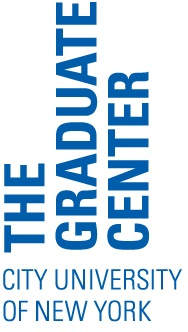Writing a Resume
If a CV is your autobiography, a resume is a photographic snapshot of you. A resume is not meant to be comprehensive; it is a marketing tool that should focus on the experience you have that is most relevant to the job or types of jobs to which you’re applying.
A resume should be about 1-2 pages. It is likely that the person who reads it will only glance at it for 10-15 seconds on her first pass, so your qualifications should really stand out. Your resume’s formatting should be simple and consistent. (Take a look at some of the samples linked below to get some ideas.)
Resume Contents
A resume is composed of several sections. “Education” will likely be the first section for those who are current students (though there are exceptions to this rule). “Experience” will likely come next.
Experience
Your “Experience” section can include a wide range of experience, including internships. Do not feel that you have to limit it to only paid positions. In addition, sometimes job searchers use qualifiers to highlight different types of experience: “Managerial Experience,” “Research Experience,” or “Teaching Experience,” for example.
The way you describe your experience on a resume is very important. Use bullet points and action verbs to describe the work you’ve done. (Boston College’s Career Center has a great list of resume action verbs.) When writing your bullet points, don’t simply describe your work—think about your work in terms of accomplishments. Quantify when you can. For example, don’t write “Awarded fellowship” as a bullet point. Write “Researched and wrote grant proposals, receiving $50,000 in funding for individual research.” Think carefully about the requirements of the job(s) to which you are applying. Give detailed examples of when you’ve done similar work.
Other Categories
There are additional categories that job candidates sometimes include on their resume.
The first comes at the top of a resume and is often called a “Summary,” “Profile,” or “Objective.” This is entirely optional. It is most useful for those who are changing careers and those who have experience in several different fields and need a way to connect the dots of this experience for employers.
Sometimes people include a skills section, which most often includes technical skills, but is sometimes more broad. Though it can be tempting to include a long skills section at the beginning of your resume in order to highlight your transferable skills and/or cover some gaps in employment (what is called a “functional” resume), avoid overdoing this. Most employers will want to see clearly where you’ve worked, when, and what you’ve done there (what is called a “chronological” resume).
Finally, sometimes people include information about their interests at the end of their resume. This is useful if your interest in something is unique and sustained (e.g., “textile artist with a focus on hand-dyeing materials with plant-based dyes”). Enjoying “travel” or “reading extensively” is not unique.
Some Other Considerations
If you are a PhD student or alumnus/a with an academic CV, it is likely that you will have to make some serious cuts in the content of your CV to get it to 1-2 pages. Sometimes it is hard to know what to cut and what to keep. If you are applying for a particular job, let the job announcement be your guide—stress the points of connection between your background and what the employer is looking for. You may find that some of the things you’ve spent a lot of time on (e.g., your publications) do not need to be listed on a resume or can be summarized in one bullet point (e.g., “Published 5 healthcare-related articles in competitive, peer-reviewed journals”). Do not let this worry you. Remember that your resume is just a marketing tool and, as such, only focuses on the things that make you most attractive for a particular position.
Additional Resources
Resume Samples and Guides
- Versatile PhD sample resumes and hiring success stories (navigate to the “PhD Career Finder” and select any industry field in your relevant cluster [i.e., STEM or Humanities and Social Sciences] to view sample resumes from PhDs working in that field)
- Penn Career Services sample resumes for graduate students and postdocs
- Columbia University Center for Career Education resume guide
- University of Washington Career & Internship Center career guide with sample resumes
- DePaul University Career Center resume samples and guides
- LiveCareer resume samples and writing tips
- Harvard’s Graduate School for Arts and Science’s Office of Career Services sample resumes and non-academic cover letters
- UCSF Office of Career and Professional Development sample resumes for scientists
Articles
- “Want an Unbeatable Resume? Read These Tips from a Top Recruiter” by Kerry Hannon (interview with Tony Beshara, a Dallas-based recruiting and job placement powerhouse, president of Babich & Associates, and author of Unbeatable Resumes) in Forbes
- “Why I Tossed Your Resume” by Brent Miller in The Chronicle of Higher Education
- “From CV to Resume” by Kim Thompson and Terren Ilana Wein in The Chronicle of Higher Education










